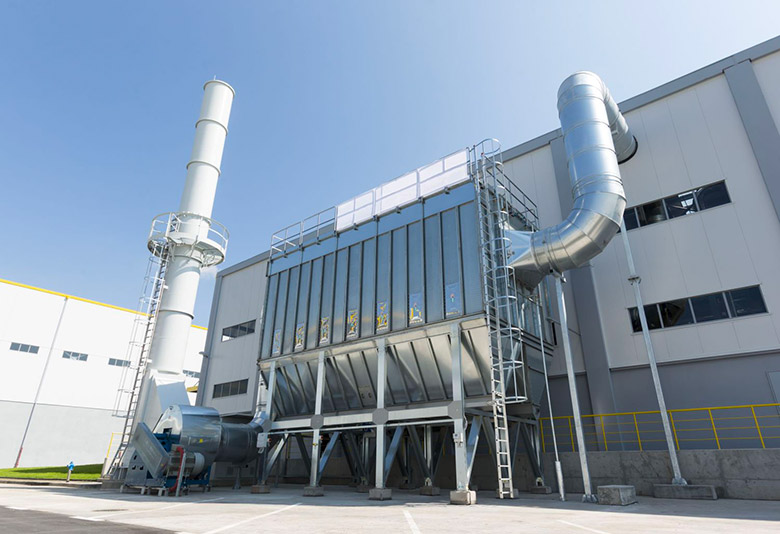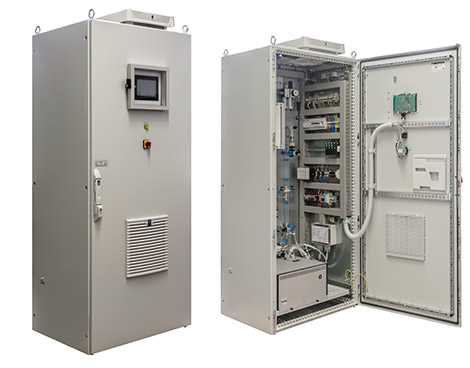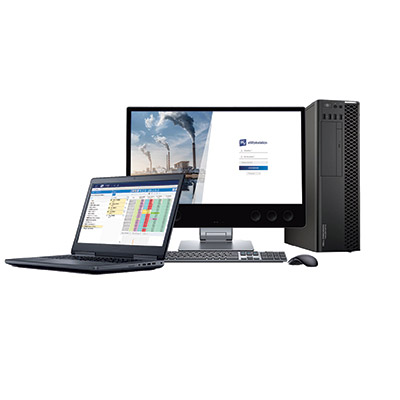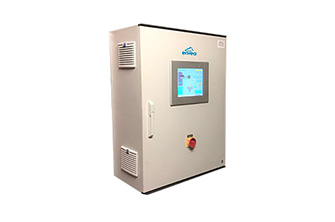Industries & markets
mercury emissions monitoring in waste incineration plants
Even though mercury is a naturally occuring substance it is still toxic. The health of people and the environment need to be protected from mercury exposition. Therefore, strict regulations apply in many industries, also in waste incineration. Very low emission limit values have to be met by operators of waste incineration and co-incineration plants. Advanced mercury measurement systems are needed to comply with regulations.

NEW REGULATIONS FOR HG EMISSIONS
In December 2019, the new BREF for waste incineration was published. By December 2023, it must have been adopted into national legislation in the EU member states. For operators of waste incineration plants and co-incineration plants, this means new challenges regarding the monitoring of mercury emissions.
For all plant operators who have not taken any actions yet, short-term action is required.
The most important conclusions for Hg emission monitoring from the BREF at a glance:
- Continuous monitoring of mercury emissions required, with state of the art technology
- National emission limits for Hg will (possibly) be lowered
- Optimisation of Hg mitigation may be necessary
- Analyzers must be QAL1 certified
CONTINUOUS MERCURY MONITORING IN WASTE INCINERATION
Mercury monitoring in a waste incineration plant or even in a co-incineration plant can take place in different areas of the plant. Linking different technologies leads to optimisation of the flue gas cleaning process and can help to ensure low Hg emissions. The different areas include:
- Continuous Hg measurement on the raw gas side
- Continuous monitoring of the Adsobens dosage
- QAL1-certified mercury measurement on the clean gas side
- Software-supported real-time monitoring of parameters for optimisation and control

CONTINUOUS HG MEASUREMENT ON THE RAW GAS SIDE
On the raw gas side, continuous mercury measurement can be used before exhaust gas treatment to detect mercury peaks and adjust the adsorber quantity accordingly. With the right system, ultra-fast response times are achieved and large measuring ranges are covered. This means that the entire process can be well monitored right from the start and problems can be detected early in the process.
CONTINUOUS MONITORING OF ADSORBENT DOSING IN WASTE INCINERATION PLANTS
With sensors for flow measurement, the reagent injection can be monitored in real time. This leads to optimisation of the adsorbent recirculation rate as well as its re-dosing, because the injection of activated carbon, lime or other adsorbents is thus ideally matched to the requirements of the process. Therefore, a significant increase in efficiency can be achieved.
QAL1 CERTIFIED MERCURY MEASUREMENT ON THE CLEAN GAS SIDE
With a QAL1-certified mercury measurement on the clean gas side, you can meet regulatory requirements and the specifications of the BREF for waste incineration. The continuous measurement enables a highly accurate determination of the mercury in the flue gas. With the SM-5, a QAL1-certified Hg measuring range of 0-5 µg/m3 is possible. This means that plant operators are also equipped for the challenges of the future.
SOFTWARE SUPPORTED REAL-TIME MONITORING FOR CONTROL AND OPTIMISATION OF FLUE GAS TREATMENT
With software for recording and processing emission data, flue gas treatment can be controlled and optimised in real time. Monitoring of a wide variety of parameters, exceedances and calculated mean values as well as trends and emission limits is made possible.

CONTINUOUS HG EMISSION MONITORING WITH SM-5
ENVEA’s QAL1-certified total mercury analyzer SM-5 is ideally suited to the requirements of the BREF for waste incineration. The continuous emission monitoring system has the smallest QAL1-certified Hg measurement range in the world at 0-5 µg/m3. With the SM-5, operators of waste incineration plants and co-incineration plants are equipped for the challenges of the future.
Advantages of the SM-5:
- Very low certified measuring range with high measuring accuracy
- Certified operation without calibration reduces operating costs
- Simple, robust design for maximum uptime and low maintenance requirements
- Converter furnace without catalyst requires no reagents and minimise operating costs
- Very low air consumption also reduces operating costs
In addition to the certified measuring range of 0-5 µg/m3, further measuring ranges of 0-30, 0-45, 0-100 and 0-1000 µg/m3 are possible. The dynamic measuring range adjustment allows reliable measurement of Hg concentration peaks. The SM-5 mercury analyzer is certified for operation without a test gas generator, which has a beneficial effect on reliability and reduces operating costs.
CHECK FOR MERCURY BEFORE INCINERATION
If waste is to be checked for mercury already upon delivery before the incineration process, then mobile mercury measuring devices can be used. The portable systems such as the Mercury Tracker-3000 XS determine mercury concentrations in indoor and outdoor ambient air and can be used to detect mercury spills.
The Mercury Tracker-3000 XS works with the cold vapor atomic absorption spectromety and delivers highly precise real time measuring results. The easy to operate, small and ultra-light device is capable of measuring trace mercury levels with measuring ranges of 0.1-100 / 0-1000 / 0-2000 µg/m³.
CONTACT OUR EXPERTS
If you need more information on continuous mercury emissions monitoring or want to discuss your challenges, you can talk to our experts. We are happy to help you and look forward to speaking with you.
Always be informed about new technologies on mercury emissions monitoring as well as rules and regulations with the ENVEA newsletter.


